Interviews
Interview to Helle Norway – Traditional Handcrafted Scandinavian Knives
27.04.2018
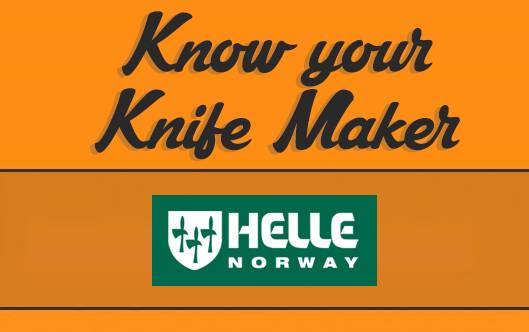
Here’s our interview to Helle Knives, makers of traditional Scandinavian knives.
1. How did Helle Knives start? Can you tell us more about Helle’s roots?
1932 at the family’s foundry in rural Western Norway, two brothers, Steinar and Sigmund Helle began making small sheath knives inspired by the mountains, fjords and open seas of Norway. The brothers were skilled toolmakers, blacksmiths and metallurgists who came up with unique processes to manufacture goods. Over the years the styles and types of knives have changed a bit, but the tradition of handcrafting Scandinavian knives with handles made of natural materials remains the same. No machine or automated processes can replace skilled craftsmanship.
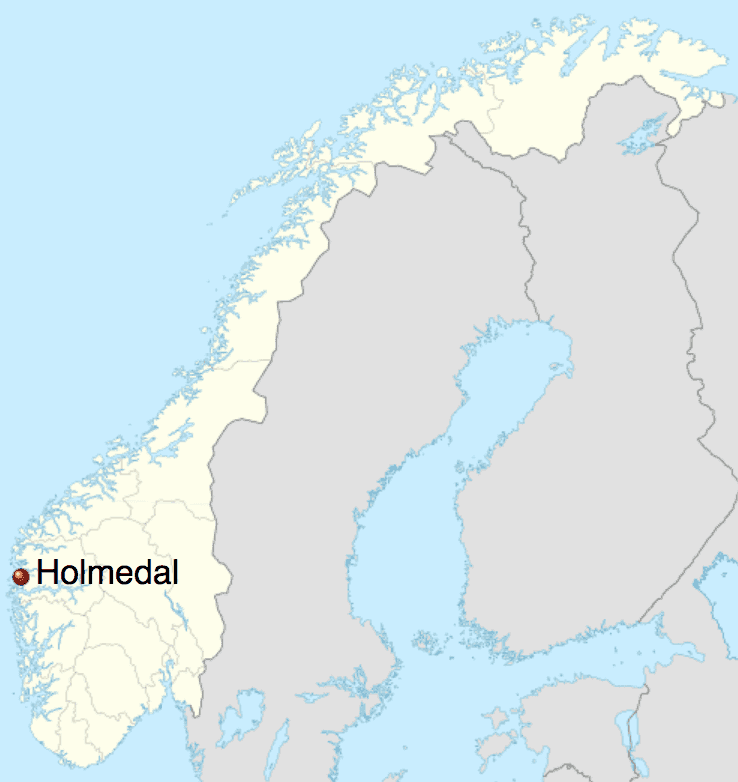
Helle knives are made in Holmedal, Norway.
2. What is a knife to you? Is it a simple tool or something more?
Helle knives started based on a concept to make better tools for the local farmers who were living off the land, fishing and herding animals. The knives needed to be functional for use in the harsh Nordic conditions but also needed to look good, like a showpiece worn on the belt. The handles are the soul of a Helle knife. Made from natural materials you might find on a farm: wood, leather and antler shed. The curly birch wood used in many Helle knives starts as blanks curing outside the factory. Skilled hands then cut, shape, grind, sand and polish the handles.

Sheath of the Helle Harding.
The Nordic style leather sheath is a hallmark of a Helle knife, both functional and beautiful. Each sheath is made using quality leather cut, shaped and stitched at the Helle factory by skilled hands. The sheath gives each Helle knife character, while also securing and protecting the knife it holds. From the thong-like carry of the Viking knife to the vintage work belt style of the Harding, each sheath is matched to suit the knife.
3. Everybody loves Scandinavian knives. Why do you think people are so fascinated by the knives from the North?
There’s something undefinable about Helle knives. Scandinavian knives have stood the test of time, in the case of a knife like the Helle Viking, the design goes back over a thousand years. I think there is a connection some people feel with the old-world style and handcrafting that also is appealing.
4. With all the beautiful historical Scandi knives, how do you find a balance between Tradition and Innovation when making new knives?
To stay relevant Helle has adapted new construction methods and styles over the years. The knives designed by Les Stroud (Temagami, Mandra) required new ways of manufacturing to make semi-full tang and full-tang knives. The first Helle folding knife, the Dokka, was made in 2011 and the more complex Bleja folding knife was released last year. The new designs balance the Norwegian character and Helle traditions while meeting the demands of the current generation of knife users.

The Helle Dokka: The first Helle folding knife.
5. Helle knives are meant to be used. What do people do with Helle Knives?
Most traditional Nordic knives feature a stick tang or hidden tang which is ideal for working in cold, wet conditions. Most Helle knives feature a Scandinavian flat ground fixed blade and a leather sheath for belt carry. The natural wooden handles are warm and feel comfortable in the hand. When you find a Helle knife that fits your hand and style of use, then it’s almost an extension of yourself. Helle knives have a razor sharp Scandinavian grind that is great for cutting or carving wood. We also make knives for fishing and hunting, and folding knives which are good for all-around utility.
6. Can you tell us more about Helle’s new creations and collections?
The Helle Bleja, our latest folding knife, was developed over the last three years and uses full liners for a strong and reliable utility folder. While at the same time preserving the iconic Helle look and feel, like a drop point blade made of Helle’s renowned triple laminated stainless steel with a razor sharp Scandinavian grind, natural curly birch wood and a sewn leather case. The Helle Trofé knife has been updated with darkened oak, and is a classic Norwegian style outdoor knife:
pics by @anthonyawaken
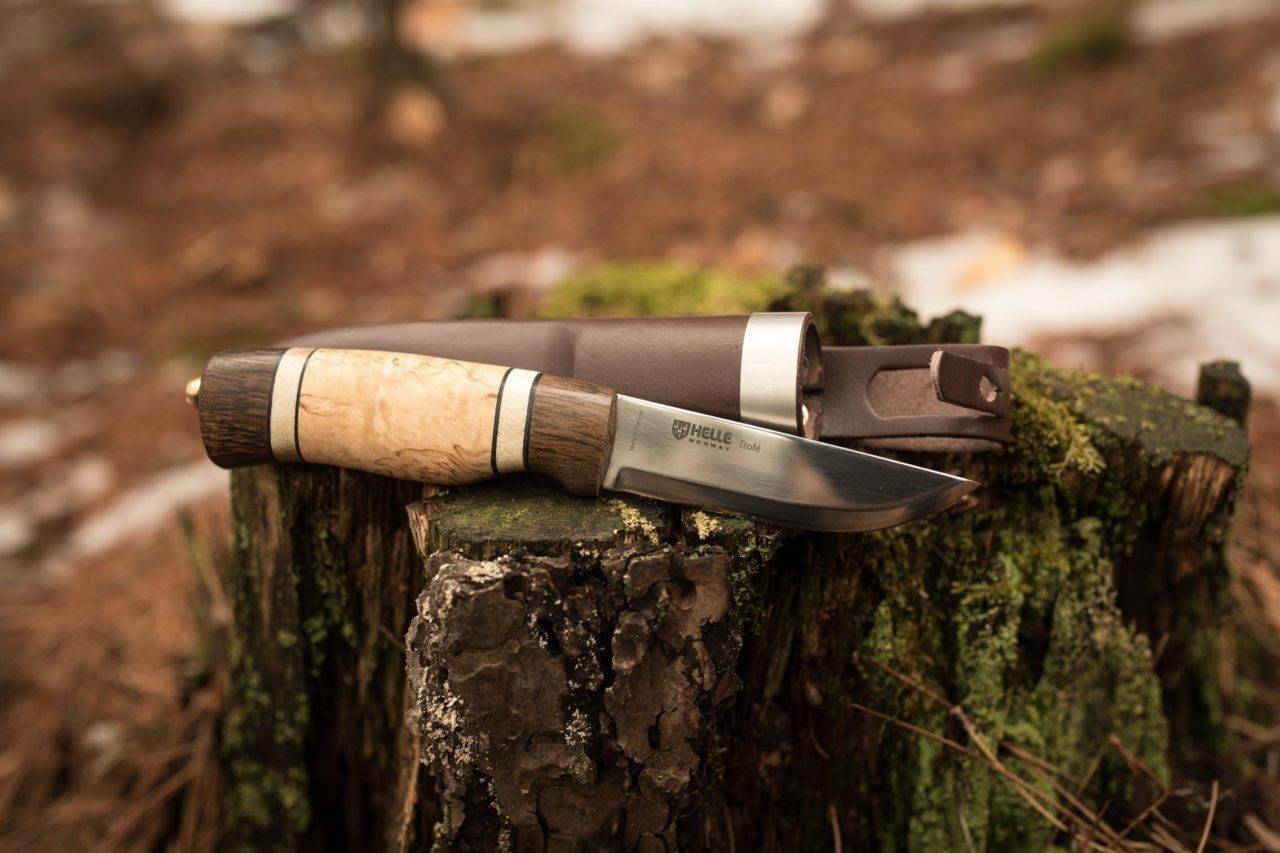
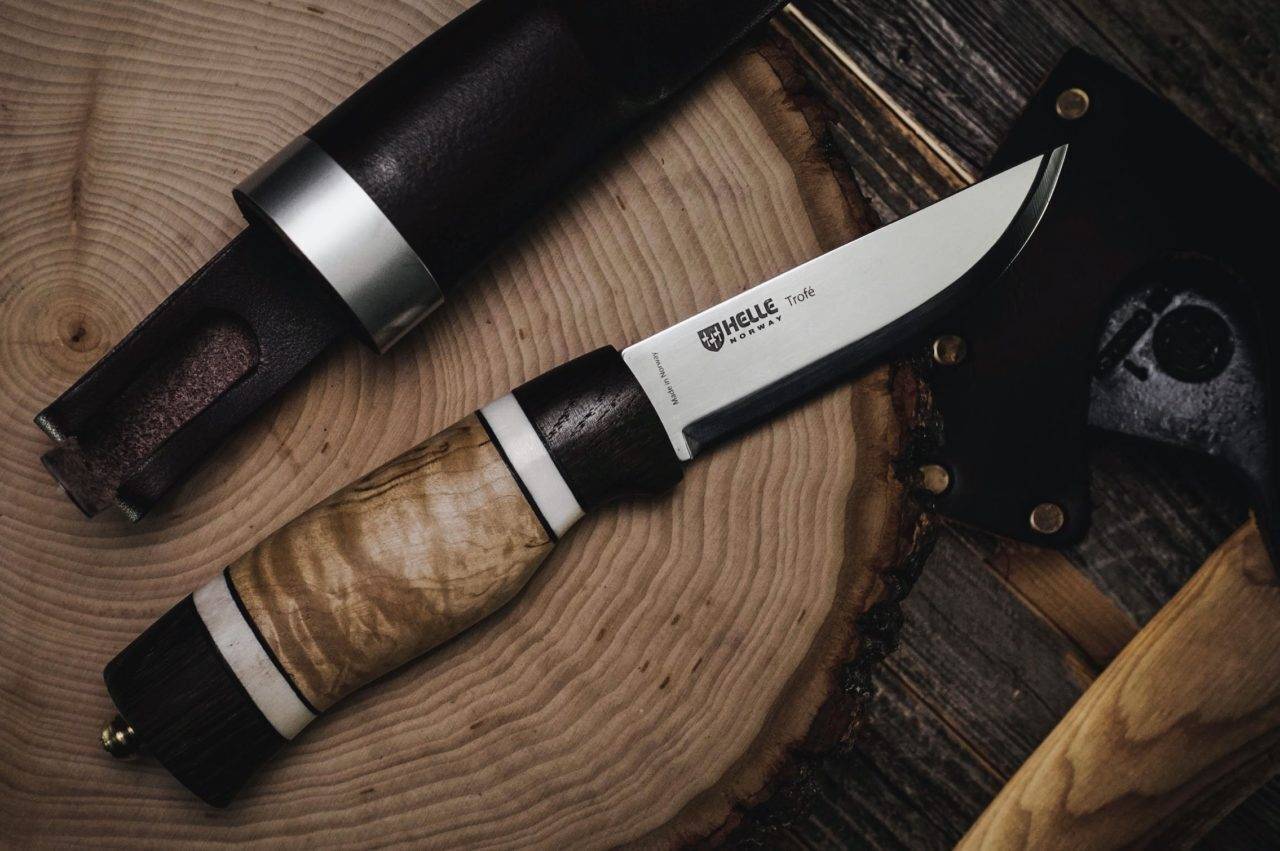
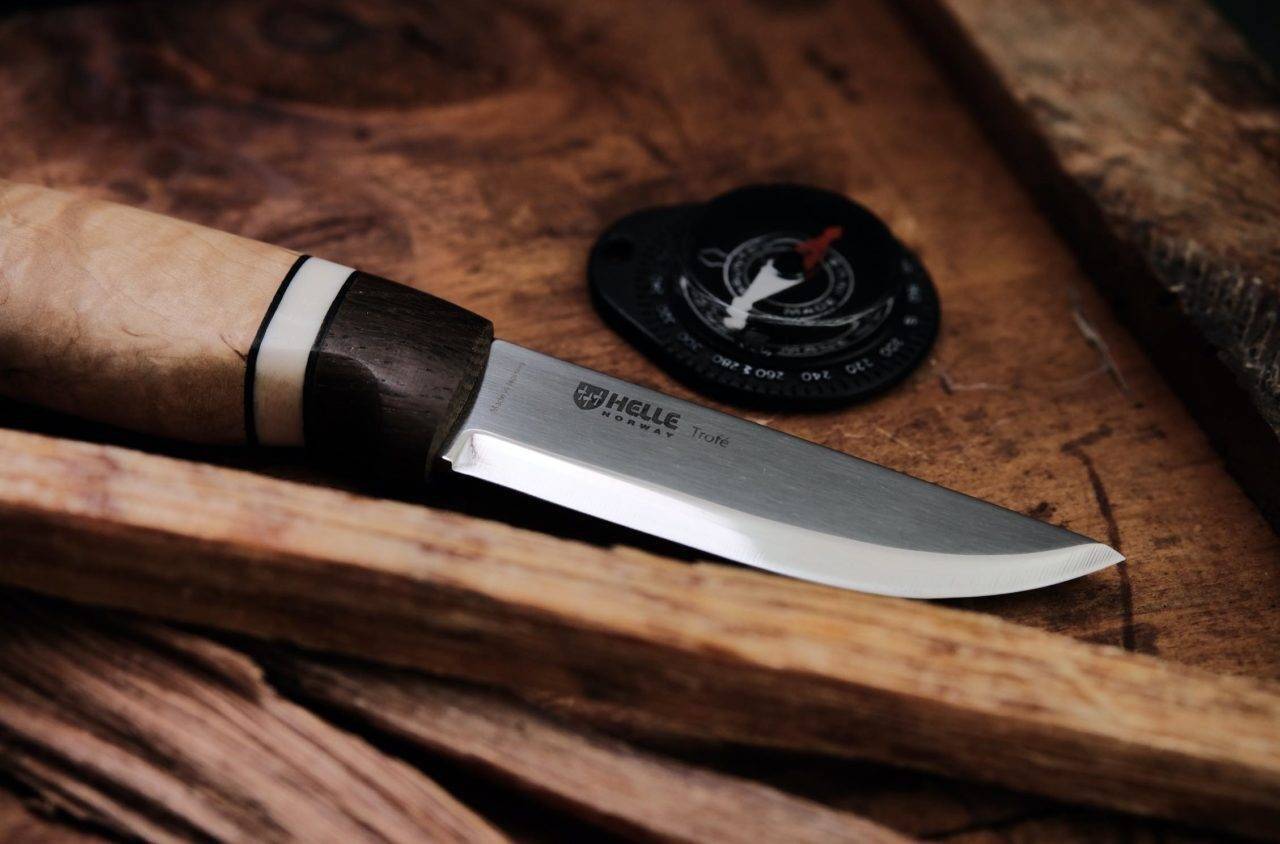
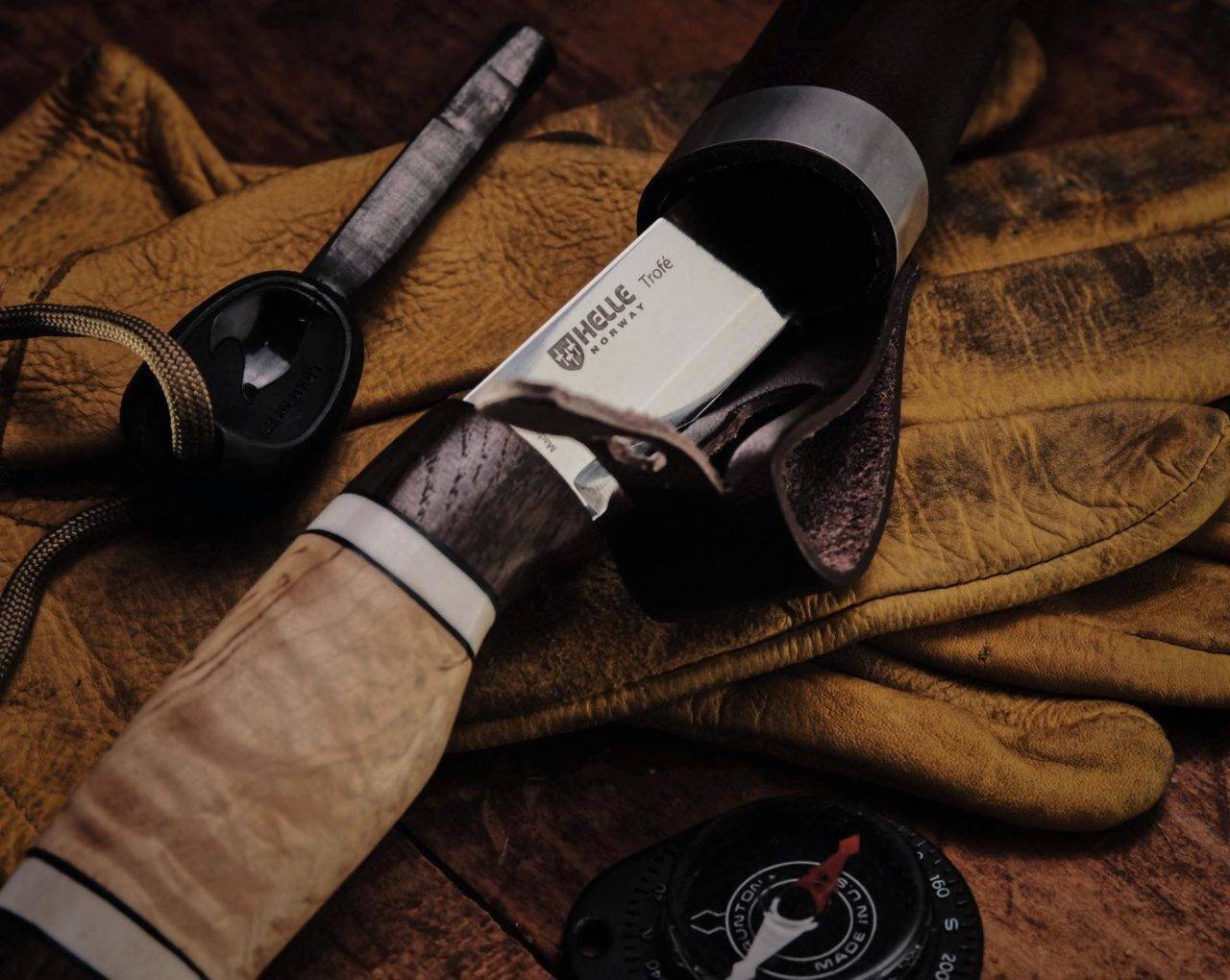
This summer Helle will release the Wabakimi Knife. The third in a series of Helle knives designed with Stroud, the Wabakimi fits between the larger Temagami knife and smaller Mândra neck knife. The result is a medium-sized, well-balanced knife small enough for hip carry, yet amply sized to make long carving sessions comfortable and efficient.
7. How do you keep your Helle knife sharp? Any tips and recommendations?
An original Helle knife will last a lifetime if it is treated correctly. We recommend a diamond whetstone or a hard, fine-grained sandstone whetstone with plenty of oil or water.
Honing is recommended only when the edge of the blade had become damaged or is extremely dull. In this event, use a loose, fine-grained grindstone and plenty of water. Do not use too much force when you grind and avoid grinding with an emery wheel, as this can easily result in a hot-ground edge. A hot-ground edge cannot be repaired.
8. What’s your best selling knife and why?
Our bestselling knives are the Helle Eggen; which is a versatile all-round knife, with a good grip and blade.

Helle Eggen.
The Helle GT; which is a good-looking and strong hunting knife.

Helle GT.
Helle Harding; a traditional Helle knife with our laminated steel and a functional handle made with oak, birchwood and leather. This knife resembles the Helle way of making a good knife that is meant to be used and beautiful when carried on the belt.

Helle Harding.
Helle Viking; which is based on a 1000-year-old knife from the Viking age. Aside from being an honest, unpretentious Scandinavian design, the knife has a historic look and feel to it. Many are drawn to the simplicity that has no special features or fancy design. The Viking is just a knife, and no more.

Helle Viking.
9. Tell us something surprising about Helle Knives.
Many people who don’t know Helle are surprised to discover we are still manufacturing knives today which could as well have been made in the 30’s, when our story begins.









